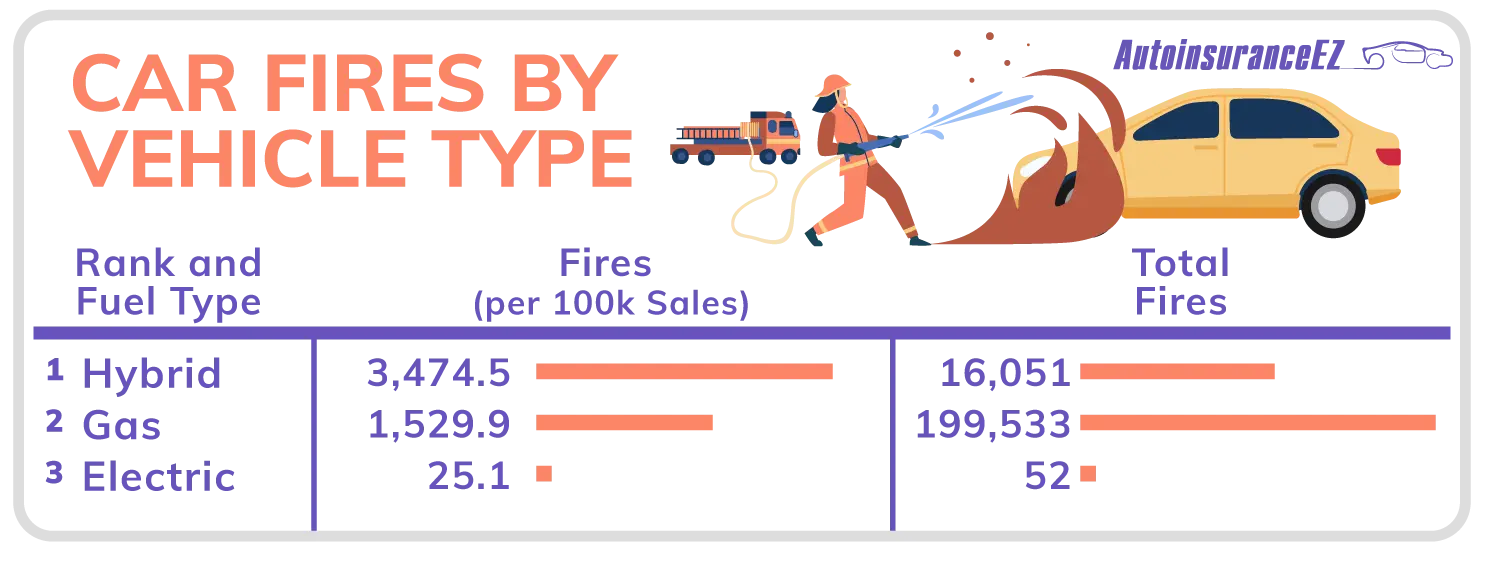While this seems to be more aimed at scooters and the like, I’ve been waiting for electric vehicles and renters to become an issue.
Landlords are going to try to avoid putting in electric car charging points for as long as they can. They simply don’t want to spend the money.
The issue is a little more nuanced than that. Most buildings can only install a few EV chargers before they need to upgrade the mains, and if that needs to be done, the transformers likely aren’t adequate, and the local grid may not be able to withstand it as well.
The owners costs ends at the transformers, taxpayers and the energy corp are in for the rest, and until the energy corp upgrades the grid and transformers, building owners can only do so much.
If the infrastructure can’t handle it, then upgrade the fucking infrastructure! Politicians will fall at voters’ feet to build new roads, highways, etc., but when it comes to the green energy transition, there’s no problem too minuscule to be ignored!
I’ll happily admit that there are going to be many issues in the green energy transition; we should acknowledge them, but we should also strive to address them, rather than throwing our hands up in the air and idly promulgating the status quo.
Switching from one type of car to another isn’t a green transition. Car production still creates enormous co2 emissions, paving everything for cars makes heat islands, tires produce piles of particulate pollution, and so on. Fixing the car pollution problem means moving to other forms of transportation, not just slightly-less-bad automobiles.
Amen. Don’t have to worry about the house, neighborhood, or city infrastructures supporting your EV if your EV is an ebike that can plug into a standard outlet in your living room, or wherever you keep it. Or if you can just walk a quarter mile and hop on a light rail. Or if instead of driving a Ford, you just use your Chevrolegs. Of course, this does also require development patterns to support it, i.e. roads that aren’t fucking death traps for anyone outside a car and stuff being close enough together that you can actually get to it in a reasonable amount of time, but hey, there are also non-car-related reasons we should be doing those things too.
Chevrolegs
Hehe, reminds me of a similar joke in French, “B-M-double-pieds” (B-M-double-feet, for BMW).
I have up to 4 kids at a time in my vehicle along with an often substantial amount of their stuff ( school backpacks / sports equipment ). It is not uncommon to stop for groceries already loaded with passengers and gear.
What model of eBike should I get?
Also, I work 50 km from home and commute on a road that was made primarily to provide large trucks faster access to the port. It is a road along the river. In addition to the huge, fast moving vehicles, it has no artificial lighting and is away from building that might help with that ( so pitch black at times and also prone to significant fog ). Please recommend something safe.
It is probably 40 km and through a major tunnel and over a substantial bridge to the nearest “light rail”. I do not live in the country.
Now, not everyone has my situation. That said, I am sure MANY people ( in North America at least ) have needs that require cars today. Our culture and infrastructure has been designed around it and changing that is a bigger problem than migrating to electric vehicles.
Shared ownership or shared fleets is one middle ground. Autonomous cars would help but that timeline is uncertain.
I have up to 4 kids at a time in my vehicle along with an often substantial amount of their stuff ( school backpacks / sports equipment ). It is not uncommon to stop for groceries already loaded with passengers and gear. What model of eBike should I get?
That’s a valid question, and it’s one that anybody who advocates for better urbanism, like I do, needs to be able to address. Fortunately, there are multiple answers.
The most direct answer to your question on its face is that you could get a bakfiets, or what the English-speaking world calls a cargo bike/cargo ebike. These are available from brands like Orbea, Aventon, Tern, Co-Op, Specialized (that’s Specialized with a big S), and more, they have been showcased as potential car replacements capable of carrying people and large amounts of stuff on Youtube channels like GCN, Not Just Bikes, Oh The Urbanity, Propel, Shifter, and others, and some specialized (that’s specialized with a small S) models have even been deployed as low-footprint urban delivery vehicles in so far highly successful trials by companies like UPS and FedEx.
However, to address the frankly incredibly frustrating assumption underlying your question, neither I nor the vast majority of other urbanism advocates will actually try to take away your car, even if we were given dictator-like control, because I for one am not interested in controlling people, I’m interested in having multiple viable choices for how to get around. You would still be able to have your car. Driving it in the city center would be inconvenient and expensive enough that you wouldn’t want to do it, but it’d be trivially easy to get there by transit or cargo bike instead. Plus, while the drive to your work would be largely unaffected, that road wouldn’t be the only way to get there, either. Speaking of which,
Also, I work 50 km from home and commute on a road that was made primarily to provide large trucks faster access to the port. It is a road along the river. In addition to the huge, fast moving vehicles, it has no artificial lighting and is away from building that might help with that ( so pitch black at times and also prone to significant fog ). Please recommend something safe.
This is a systemic problem, not a you problem. As such, you shouldn’t be expected to take responsibility for solving it, least of all by just protecting yourself. You mention a port: most ports have existed for longer than cars have been the dominant urban species, and as such, that road you describe might have either replaced or run parallel to a railway that would have also gotten you there. The fact that that railway is no longer a viable option for you means that an option has been taken away from you, and that’s what you should actually be angry about. That, and the lack of artificial lighting on said road. Allow me to refer you to the second half of my earlier comment:
Of course, this does also require development patterns to support it, i.e. roads that aren’t fucking death traps for anyone outside a car and stuff being close enough together that you can actually get to it in a reasonable amount of time, but hey, there are also non-car-related reasons we should be doing those things too.
Emphasis added. Anyway:
Now, not everyone has my situation.
Yes. Hi, it’s me.
That said, I am sure MANY people ( in North America at least ) have needs that require cars today. Our culture and infrastructure has been designed around it and changing that is a bigger problem than migrating to electric vehicles.
That is exactly the problem I’m talking about. They have those needs because our infrastructure has been built to create them, and that causes far more harm than just switching to EVs will ever solve. EVs are like trying to wallpaper over the hole in the Titanic: better than doing literally nothing, but won’t actually fix anything.
Shared ownership or shared fleets is one middle ground.
Sounds like communism to me.
Autonomous cars would help but that timeline is uncertain.
Adam Something has a thing he does where he takes some kind of pie-in-the-sky techbro gadgetbahn idea, like AVs, and gradually addresses all the design flaws with it until he’s invented trains again, then ends with his catchphrase “just build a regular fucking train.” And I think that’s where I’m going to leave off.
deleted by creator
No need to swear, friend. If that city switched to walking and shared transport, most of those roads could be converted into housing or parkland instead of concrete and parking.
deleted by creator
I mean, a heck of a lot of people do get by just fine using public transport.
I think a nice balance would be better, personally, but it is an option. Public transit would be more viable if we increased it’s infrastructure. I believe that more people would use it if it was more appealing.
Sometimes it can be fun to not need to drive lol. Some of the best nights out over the last year ended in a bus ride home. Nobody had to be the DD this way.
I don’t know why, but I feel like I should also specify that we kept to ourselves and didn’t really talk while we were on the bus those nights.
First you have to get people out of the habit of being an active driver, and get to the point where their EV drives them to work. Once that becomes norm then taking a light rail transit is an easy sell. If you try to just force a new transit mode on motorheads they aren’t going to accept it. Small environment savings and having large generating company’s scrub pollution is better that leaving it up to individual car owners, and in places with Hydroelectic power it makes sense to ditch fossil fuels
Yes it is. Why switch to walking if just killing the whole population will do even more. Just because something else can do more doesn’t mean the original isn’t worth doing.
They are upgrading it, as people need it and as fast as they can ahead of planned upgrades.
There shortages on parts, so most are being done as required, but to think it’s not being upgraded (in most places, local bullshit aside) is just pure ignorance.
I’m sure people are trying to address the problems, I’m not saying that’s not happening. What I find maddening however is the double standard between how issues are handled when it’s fossil fuels vs. green energy. Every tiny issue with green energy is breathlessly amplified, while there’s no shortage of idiotic solutions to resolve issues in carbon-based energy infrastructure.
It’s this atmosphere that I’m trying to raise awareness of and change!
“The grid can’t handle it” is a bullshit argument that is easy to sell to people who want to keep their IC cars. The difference between highest demand and lowest demand in Ontario this week was 7000MW, if everyone charges their car at night there is power available AND it helps increase the base load which is good for the gird operators.
Even individual buildings may not need to upgrade their main service even with rapid chargers, the operators just need to keep in mind not to run the oven, dryer, AC and car charger at the same time.
Yes the power plants can pump out enough, but not all transfer stations are able to handle the load, each individual hub, may not be able to handle the load.
It’s far more nuanced than this even, but don’t believe everything everyone is selling you, everyone has an agenda and no one is going to tell you the entire truth.
If an entire block suddenly goes EV one night the infrastructure isn’t there, it’s slowly being updated which you don’t see, but there’s issues out there.
New Brunswick had a program in the 1970s/80s to get people to switch to electric home heating due to the oil shocks. That was far more ambitious than what is being proposed here.
Edit. I was curious, so I looked up recent numbers for home heating in NB, as it’s the area I’m most familiar with.
From 2000-2020, the number of residences increased by 46,000 (285,000 to 331,000). Overall, 72% of which are detached houses. The market share of electric heating went from 57% overall to 79% in those 22 years.
New generation was limited to ~400MW nameplate of wind and one 250MW combined cycle natural gas plant, while several older coal/heavy oil units were mothballed, so overall output hardly changed.
There are a lot of places that grew a lot faster. Yet, the power stayed on.
Moot point, nowhere will suddenly switch to electric vehicles overnight.
Multi family complexes do all the time, richer neighborhoods typically adopt EVs faster. Some municipalities are passing legislation mandating their use. Just because you can’t see it being an issue doesn’t make it moot.
It’s happened before, which is why it’s a known issue, so it’s far from moot if it’s happened before, no?
Point out one example of an entire block switching to electric vehicles overnight then.
Municipality requires new buildings to be EV ready, ANY infill neighborhood would fit the requirements for your example. That’s just one city, happening all over the world.
But hey, continue with your head in the sand.
Everyone in the burbs run their AC full tilt all summer and the grid holds up just fine. An EV charger used overnight, when your AC runs less, would present no more of a load than the daytime high usage. Stop pushing anti-electrification bullshit, or move to Alberta, they love that shit.
Who charges overnight? Everyone just plugs it in when they get home. It’s an issue that can’t just be handwaved away like that.
Sure stuff can be on a timer, but codes need to be presented, adopted and they need to installed. That takes years, it’s already too late.
Dude, electric car’s are about 25 computers on wheels. Adding a “charge between hours” function is so trivial I would be surprised if it doesn’t already exist. But no, you’re right, computers are a complicated pipe dream, we should all go back to coal burning, steam powered, difference engines and horseless carriages.
I own an EV and there’s definitely a setting in the car to specify what time of day to charge (and my charger itself also has an app where I can specify that time restriction).
Codes and standards need to adopt those functions, right now there is only a couple of code complaint ways to deal with it on a panel end.
A friend showed me his overnight Tesla fill up. 6 bucks. That really doesn’t seem like much power used compared to everyone running baseboard heaters here in the winter.
deleted by creator
This is no different from the widespread adoption of electric clothes dryers, water heaters or domestic home air conditioning. Electrical distribution is never static.
It is far different, the scales at play just aren’t the same and a lot of distribution centers are already near capacity even if the grid can supply enough.
Your not wrong that it’s not static, but it’s ignorant to believe that it’s even on the same scale as any of those adoptions.
Add in there has been a transformer shortage since before covid started…. Yeah it’s not the same.
It’s exactly the same. You’re adding one 30-50A circuit to residential that will be used intermittently, and primarily during off peak hours. Very, very few vehicles will need a full charge every night, and the software on the charger side typically meters in current at much less than capacity if it’s on a schedule, as the lower the current, the less heat, and less stress on the battery . Large charging stations are on par with commercial/light industrial, and we add that sort of load all the time.
I’ve worked for power utilities for 25 years on the generation side with some on the T&D side. The planners spend a pile of time on analysis to determine where additional load and/or sources are being added and triage based on that. When old stuff is scheduled for replacement, sometimes an upgrade is warranted, sometimes not, based on that analysis.
A lot of electrical equipment currently has long lead times. I’ve got quotes for up to 70 weeks on some stuff. It’s been a side effect of relying on dodgy suppliers overseas. It has been improving.
Commercial transformers have a hell of a lot more head capacity. Codes and standards when doing panel calculations don’t care about off peak in most places. And unless it has a proper timer, you can’t remove it from calculations on an intermittent basis.
2 houses on the same transformer in a dated neighborhood and it needs to be replaced with a new one. You can plan ahead all you want, but you can’t plan for that at all. And every single one of those requests will push back planned upgrades.
So no, it’s not the same at all.
We had entire neighbourhoods go from oil furnaces and either 50A or 100A services to electric heat with 200A services. Yeah, equipment got upgraded, that’s how it works. Where did I say otherwise?
And you certainly can plan for that. People are doing it as we speak.
When it’s planned it’s fine. You can’t plan for when random citizens get them and it just so happens a swatch of them are in the same place.
Those sometimes get put to the top of list, and there’s no planning for that….
Also, on 2400w an EV can charge a significantly large amount overnight. You mightn’t need a charge point in the first place.
2400W x number of occupants is still some series draw on their main panel.
Their point still stands that their mains would need an upgrade.
Electrician here, no it would not need to upgrade your panel to add a charger. If you have an intermittent load, like a car charger, you can add it on to your panel provided you don’t run it along with your other high power, intermittent loads (clothes dryer, oven).
Car Charger wouldn’t be an intermittent load,
You literally can not charge a car 24/7, so if it is not a continuous load…
So by your definition there is only
- Plugged in 24/7 = Continuous Load
- Not 24/7 = Intermittent
Jesus, thankfully I also size electrical systems and I would never hire you.
It’s almost not worth the hassle for level 1 charging because it’s so slow though. Might as well put in a level 2, and even then, you’re not often charging every night unless you’re putting serious miles on your EV daily. I’d say one level 2 charger for four occupants/EVs would be reasonable.
If everyone trickle charges every day it’s make a more even draw from the gird which is easier to supply. The equipment is also cheaper for the car/parking space owner.
Places without heated parking RIP
Tons of parking in sweden is open air, and we do fine with charging.
It is my understanding that “level 1” charging is 110V 12A 60Hz AC? AKA just plug it into a normal residential wall socket like a toaster? I wonder which one presents more of a load on the power grid, charging an EV like that overnight, or owning a water bed.
Usually yes, level 1 is plugging into a typical 110V socket. You can also adjust the amperage draw on some chargers. I can go from 6 to 12 A in 2 A increments on the one that came with my ioniq 5.
Level 2 is 220V and 25-80 A (<20kW).
Level 3 is technically anything above 20 kW, but usually 50 kW is the floor. These are the EV-specific fast chargers or Tesla’s Superchargers.
An EV on level 1 (or 2) is a continuous load, so I’d imagine probably easier to handle than an intermittent load.
Im west coast Canada where central heat is more of a new home thing, every previous home has baseboard heat in every room. This is true in condos and town homes also. So every winter the grid handles every non new single family dwellings use of baseboard electric heat. I don’t see this being an issueto have an EV that can charge in late hours or at lower draw if needed
When I saw this post, I also thought about places like Camp, California, who weren’t so lucky in terms of having a safe electric infrastructure. I imagine it might be trickier to shift over in those types of areas.
It’s awesome that they managed that in BC. I hope more places gain that kind of stability.
I hadn’t considered that aspect, thank you for the information!
The problem is somewhat exaggerated though.
The technology already exists to share charge across multiple cars, and since most cars don’t need that much charging, that’s not really a huge problem.
It wouldn’t be as fast as a dedicated charging spot, but for at home charging that’s fine for most.
No worries it’s a concern for even single family homes as well, a transformer can normally supply 4-6 houses, but put an EV in every house and they can only do 2.
Most people in non-modern homes will likely need a new panel and mains, same issue applies to the transformers and beyond there as well. Homeowner is responsible to the transformer.
Which is why BEVs won’t be 100% of the market as some are imagining. It’s simply impossible for a mostly inflexible idea to replace everyone’s transportation needs. It requires a vast amount of cooperation and extra resources being spent. It’s highly unlike to happen past a certain point.
Got family in a small town and it’s winter? Good luck!
Seems unfair to make everyone pay for Chargers only the wealthier people who can afford EVs use
That talking point is a bit out of date - the average price for a car int he USA (for example) is quite a bit higher than base EVs now. They’re cheaper to manufacture and gas vehicles won’t be able to compete. The only missing piece is infrastructure for charging in some places.
It won’t be long before EVs are the cheap option. Tesla for instance is supposedly putting out a cheap option soon, but I’m not holding my breath.
Tesla is probably a good one to bank on, though. The gigacasting process shaves a LOT of manufacturing cost.
That’s good to hear, but I think it’s disingenuous to say that EVs are the cheaper option when talking about people who aren’t within reach of even the cheapest new cars. Until we start seeing used decent condition EVs under $10k they’re still out of reach to a lot of people. It sucks because these are the same people who would benefit most from the lower operating costs.
Sure. But that’s something that’ll come with time. We should be preparing our infrastructure for five-ten years from now, not this year. If we wait until EVs are sub-10k used, then we’ll have a massive infrastructure crunch.
Yes, you can make an argument now for EVs being a rich person plaything, but that’s a snapshot in time. The curves are trending downward fast.
In a few years, gas vehicles are going to be for the rich assholes who refuse to get with the program and demand their precious gas stations get subsidized by the government more than they are already. It might not be too long before gas stations in city cores are completely uneconomic because 20%+ of their customer base evaporated.
There will almost certainly be a period where people are trying to dump their gas vehicles, selling them way below market, which will make them attractive to the less wealthy, which will also very much increase the temptation for governments to subsidize gas infrastructure. :(
That will further increase the price pressure on gas vehicles, they’ll be screwed by the new cheap EVs AND the cheap used gas market.
The average car is basically a pickup truck. BEVs are not even close to being cost competitive. Especially against used cars.
I think you mis-spelled “SUV” :)
The average pickup truck hauls exactly nothing all day long and should be banned from city streets.
Lol Tesla’s cheap option will be made of cardboard judging by the quality of their expensive models. Also the cheapest EV in my city used is roughly 15k. About 10k above my budget
Give it a few years. EVs are inherently cheaper to manufacture, and economies of scale are kicking in like crazy now. “Lol” is not exactly a great response to that basic fact.
Man, it’s really unfair to make me pay for the roads on the other side of town. I never drive on them!
How is that even remotely the same thing?
We all pay for things we don’t use.
Either the costs are shared between renters, like pools and other benefits, or they are charged to the people who use them. It is very likely that a portion will be shared by all with additional cost on use like parking often is.
Most buildings we have installed them they’ve made the people that want them pay to install them, now this may cause an issue when they leave and fight that the charger is theirs, but at least the wiring is in place for the next.
Some buildings are installing public ones, and it’s no different than other amenities, no one in a building utilizes all the amenities. It’s a red herring in the end to claim that.
I own an electric car and I accept maybe I’ve been luckier than most but my last basement suite the landlord put it in completely of his own will and his own dime at my request. He reused some old hot tub wiring and it worked great. And my current apartment I had them pick their preferred electrical company and paid for it myself since it was just a plug like 3 feet down from their sub panel.
So far I’ve not had a ton of issues finding places. It definitely limits where you can live with some places only having street parking or just not having the capability of putting in a charger or plug but there are definitely places out there
Look, if the rich don’t want you to have a house, they certainly don’t want you have a car.
In all seriousness, this is why it’s called late-stage capitalism: because at this point, it’s going to be fatal to it’s host. We’re nearing the point where there less and less value to extract from labour because they’re already underpaid for the value they generate and over-leveraged because debt was an easy substitute. At the same time, the wealthy are increasingly desperate for ever-larger returns.
Electric cars, if not personal transit in general, are probably going to be the iceberg that the ship of capitalism breaks on: the wealthy don’t want to pay taxes for roads and charging infrastructure, and they don’t want to pay for public transit, but they also don’t want you to have a home where you can charge your own car. But they want you to buy stuff, and they expect electric cars to sell for higher prices than gas ones.
Something has to give, here.
This is the best summary I could come up with:
Tenants’ rights advocates are raising legal concerns about a Toronto building complex that’s banning electric transportation vehicles from the property, including in units, the garage, parking spaces and lockers.
Notices were posted this week at 110 and 120 Jameson Avenue in Parkdale, owned by Oberon Development Corporation, to alert tenants to the ban.
The Residential Tenancies Act guarantees a tenant’s right to the “reasonable enjoyment” of the premises, Kwan pointed out.
Beyond that, said Kwan, if a person has a disability and relies on an electric vehicle due to mobility restrictions, such a ban could infringe on their human rights.
The devices are also environmentally friendly, said Mason, adding having more Torontonians rely on alternative transportation is helpful to combat climate change.
“This is a great solution for families who live in the buildings because it makes life more affordable by eliminating the cost of private car ownership,” said Ian Klesmer, the director of strategy and grants at TAF.
The original article contains 915 words, the summary contains 157 words. Saved 83%. I’m a bot and I’m open source!
Electric vehicles are better than combustion but they are not “environmentally friendly”
Let’s not propagate this argument disingenuously. Electric cars aren’t perfect, but a quick check of the history of the combustion engine will tell us that sufficient time and R&D will take care of many of the mining and materials issues that exist in current electric car manufacturing processes.
Those are not the primary long term problems with those. Electric cars still require roads, tires, parking lots, etc. That’s why they are ‘better’ due to no direct emissions and higher efficiency, but they can never be ‘environmentally friendly’ because they will always need expensive and harmful infrastructure.
Plus they tend to be heavier so they cause even more damage to road surfaces.
Even the heaviest electric car has nothing on a tractor trailer.
Most of the damage to road infrastructure comes from big rigs.
In sure that eases the mind of the children mining for lithium
You are confusing cobalt with lithium.
Also the existing oil industry also uses cobalt
By any chance, are you typing your replies on some kind of computer? Perhaps one containing a selection of rare metals? You can’t just point at cars and say “evil” without addressing the entire rest of technology.
Better a few children mining lithium then fossil fuels killing the whole planet.
Jesus
This is about e-bikes and e-kickscooters and e-boards and the like, not electric cars. They are absolutely environment friendly - the amount of materials needed to build an e-bike or e-scooter is nothing compared to a car. They’re ideal for dense, urban, human-scale cities because they use the same infrastructure as bicycles for travel.
117 comments and I can not find mine and only see maybe 20 of those. Edit: now they are back, 2 hours later.
Landlord didn’t approve of the other messages
And the top comments are all boomers typing “what about electrical fires!” never mind that half the people these days seem to sleep with a wired lithium-powered phone fast-charging next to them, if not in bed with them. Those batteries might be smaller, but that’s surrounded by flammable wood and fabric not a concrete parking garage. But that’s my phone and e-bike riders are other people.
There are scenarios where this is reasonable. If cars are parked below housing units. The risk of fire from the electric battery that can’t be controlled, might be too great for their insurance carrier.
Maybe if it were 2009 lol. EVs don’t randomly catch fire anymore. Even if it were true, with what Toronto landlords charge, they can afford an insurance bump.
You mean Canadian landlords. I pay more for a town house in London Ontario than most people in Toronto 😂. Canada is fucked.
Ah, a fellow victim of the London housing market. Shame how the only thing less than 450k is a literal burned out crack den.
And after paying all that money you still have to live in London 😔
Hey, I moved from Winnipeg, could be waaaaaay worse
I’m a fan of EV’s but I was surprised when I read this in the article:
Toronto Fire Services (TFS) told CBC Toronto that it has responded to 47 fires involving lithium ion batteries this year, 10 of which took place in residential high-rises.

‘involving’ is a weasel word. If a building is on fire and a battery catches fire and makes it worse, that’s ‘involving’. But that doesn’t mean the battery is to blame. It’s just another accelerant.
Is this not a tiny, super fraction of a number? The average household probably has 10x lithium batteries around in various things.
Yeah literally everyone’s phone, and pretty much any wireless speaker or rechargable anything. Vapes, computer accessories, anything.
Toronto Fire Services (TFS) told CBC Toronto that it has responded to 47 fires involving lithium ion batteries this year, 10 of which took place in residential high-rises.
Without clarification that this is specifically related to EVs, this statistic is worthless. I have 7 different devices involving lithium-ion batteries in front of me right now, and none of them are vehicles.
The remaining fire risk/safety issues tend to be with dodgy cheap batteries used as replacements in ebikes and the like, and there are ways to mitigate even those risks (fireproof charging lockers, anyone?). Electric cars are much more heavily safety-tested, and I would say that at this point in their evolution they’re no more likely to catch fire spontaneously than an ICE car.
Plus, some of those parking spaces are probably reserved for visitors, right? You think they’re going to go out and rent an ICE car just to visit this place? There will be EVs on the premises anyway, as they gain market share in general.
Right! We should stick to safe, non-flamable gasoline like god intended.
Battery fires burn much hotter than gasoline, and are much harder to put out.
Car battery fires use something like 10x the water to put out and take longer to put out.
Car batteries are great, until they are on fire
Because you don’t put out metal fires with water. Powdered salt is supposed to be used to smother class D fires.
https://www.youtube.com/shorts/tp0FFY4oBsg
if you have the salt, sure
Here is an alternative Piped link(s):
https://www.youtube.com/shorts/tp0FFY4oBsg
Piped is a privacy-respecting open-source alternative frontend to YouTube.
I’m open-source, check me out at GitHub.


















